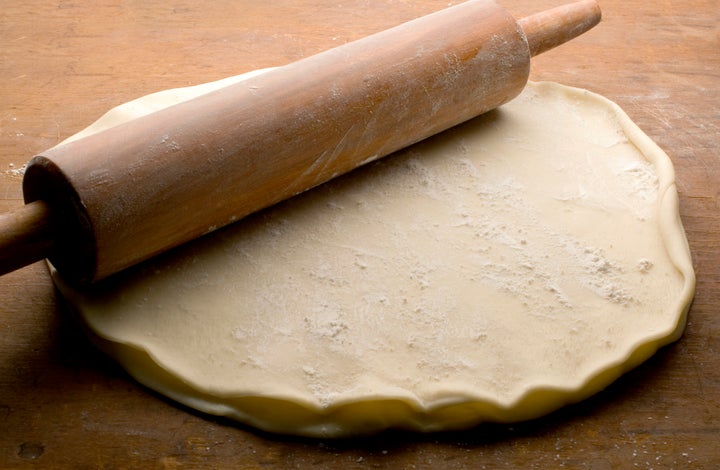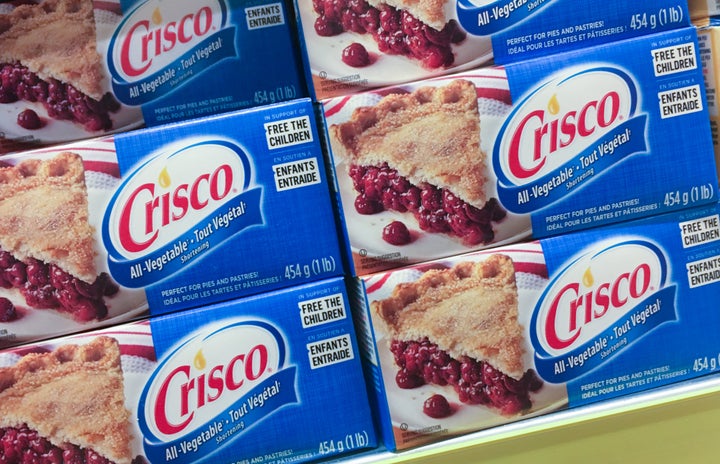
Pie crusts are made with very few ingredients, which means the quality of the ones you choose can make a huge difference. Above all, your choice of fat can make or break your pie crust. Pastry chefs and home bakers have long debated whether shortening (like Crisco), butter, lard or a combination is the best choice, and it turns out that different types can give you different textures and flavors.
Each fat has pros and cons, but “when it comes to making pie dough, determining the best fat is a matter of personal preference,” said Erin Cayaban a pastry chef at Magic Hour Rooftop Bar & Lounge in New York City.
According to Cayaban, “Having a good understanding of the type of fat you use is a critical step in achieving baking success. It significantly influences the kind of pie you create and the texture you aim to achieve.” Once you know the role different fats play in creating different types of pie crusts, “the choice of fat can be tailored to the type of pie you want to create,” she said.
We asked some of the country’s top pasty chefs for their take on making the best pie crusts, from the light and flaky to the fabulously flavored.
Vegetable shortening: A tender crust and a good choice for decorative pies, but sacrifices flavor
Jenna Huntsberger, a pastry chef and founder of Whisked Bakery in Maryland, said many pastry chefs prefer shortening because it is more stable over a wider range of temperatures than butter. That makes it easier to work with because “when you’re working shortening into the flour, it won’t melt as easily,” she said. That’s especially good for people with particularly warm hands.
In addition to being easier to work with, pie crusts made with shortening have a distinctive texture. Crusts made with shortening will be “crumbly and tender,” which some people prefer, Cayaban said.
Shortening is also a good choice for decorative pies. Ana De Sa Martins, the chef de cuisine at Beauty & The Butcher in Florida, said pie crusts made with shortening are “ideal” for making pies with decorative designs made out of crusts because “shortening doughs hold the shape the best.”

Pies that incorporate flavors into their crusts usually have crusts made with shortening as well. “It’s neutral in taste, providing a blank canvas for adding flavor through spices and flavor powders,” Cayaban said.
However, shortening’s neutral flavor is often a drawback. “Shortening doesn’t have a lot of flavor, so the crust won’t have the full-bodied flavor of a butter pie crust,” Huntsberger said.
Butter: A rich flavor and a flaky crust, but harder to work with
For some pastry chefs, butter is the obvious choice. “My preferred fat for pie crusts will always be butter. To me, it is all about flavor, and no other fat gives flavor to a crust like butter does. Other fats, even though they have great pros, lack flavor,” De Sa Martins said.
“The more flavorful the butter, the more flavor your pie crust will have,” Huntsberger added. She likes using KerryGold or other cultured European butters for the richest pie crusts.
Another advantage of butter is that it creates a flaky crust. Butter “gives you the flakiness that no other fat can give you,” De Sa Martins said. That’s because “during the baking process, the water found in butter releases steam and separates the layers within the crust,” she explained.
Despite the great taste of butter, some bakers don’t like to use it for pie crusts because it’s difficult to handle. “Butter is harder to work with than shortening because it melts at a lower temperature,” Huntsberger said. It can be hard to get a flaky pie crust with butter if the butter isn’t handled very carefully. “To get that flaky texture, you need to keep the butter very cold as you mix it into the flour, otherwise the butter will melt into the flour and you won’t get those little blobs of fat that create flaky layers,” she explained.
When Huntsberger uses butter to make pie crusts, she “makes sure it’s straight from the fridge.”
“Lining a single pie shell might require a few trips back and forth to the fridge to keep the dough at the right temperature,” Da Sa Martins added.
To get the best results when using butter, Huntsberger recommends “freezing your flour and mixing bowl before you mix the pie crust” to help control the temperature of the butter.
Quality Lard: Tasty and easy to work with, but hard to find
Lard has many advantages when it comes to pie crust. “It creates a nice crispy crust, and it is easy to work with because of its high melting point,” De Sa Martins said. However, “a huge con is that a good-quality lard is hard to find,” she said. Because of this, De Sa Martins said lard is rarely used for pie crusts, even by professional pastry chefs. Cayaban also cautions that lard “can be greasy and crumbly.”
If you do find high-quality lard, Cayaban said, it “offers more flavor compared to Crisco” and other shortenings. Additionally, “lard gives you a nice color,” said Charles Trexel, the executive chef at Baker’s Cay Resort Key Largo in Florida.
Shortening + Butter: The best of both worlds
If you still can’t decide which fat to use, mixing shortening and butter for pie crusts is a tried-and-true combination.
“For a long time, I followed Julia Child’s pie crust recipe from ‘Mastering the Art of French Cooking,’ which uses a mix of shortening and butter,” Huntsberger said. She stopped using this combination in her bakery because some customers “didn’t like the artificial ingredients in the shortening.” Nevertheless, she explains that this combination works well because “you get a little bit of the best of both.” Cayaban also likes this combination because it results in a good mix of “flakiness and a slight crumble.”